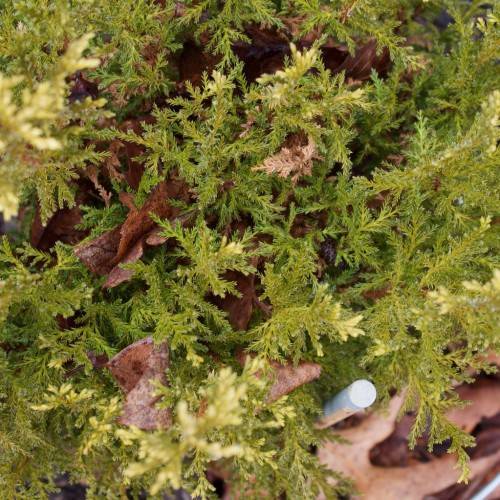
Japanese falsecypress
Chamaecyparis pisifera 'Cream Ball'
Also Known As - Japanese Falsecypress,Sawara Falsecypress,sawara cypressCycle:
Perennial
Watering:
Average
Hardiness Zone:
4
Flowers:
Flowers In Spring
Sun:
Full sun
Fruits:
Fruits Ready In Fall
Leaf:
Yes
Growth Rate:
Moderate
Maintenance:
Low
Drought Tolerant:
Yes
Salt Tolerant:
Yes
Care Level:
Moderate
watering
Japanese falsecypress (Chamaecyparis pisifera 'Cream Ball') should be watered well during the summer months, with the soil kept damp, but not wet. During the winter months, water only when the soil is dry to the touch. If the soil is allowed to dry out completely between waterings, the falsecypress may become more susceptible to diseases and pests. During periods of extreme heat, additional watering may be necessary. As a general guideline, provide around an inch of rainfall or irrigation per week.
sunlight
Japanese falsecypress (Chamaecyparis pisifera 'Cream Ball') requires full sun for at least 4 to 6 hours each day. The amount of sunlight needed may vary based on location and climate. In cooler climates, it may need more light than in warmer climates. During its growth season, the plant needs bright light in order to grow and flower well. In the winter, the plant typically thrives in bright but indirect light. During periods of extreme heat, it is best to provide some shade, otherwise the plant may become damaged.
pruning
Japanese falsecypress (Chamaecyparis pisifera 'Cream Ball') usually requires pruning once a year, preferably in spring. Pruning should be done after new growth has begun, generally in April or May. Pruning should be kept to a minimum, as this species only requires light pruning to remove dead or damaged branches, as well as shaping the shrub to the desired form. Pruning can also be done to reduce the size of the shrub as needed.
